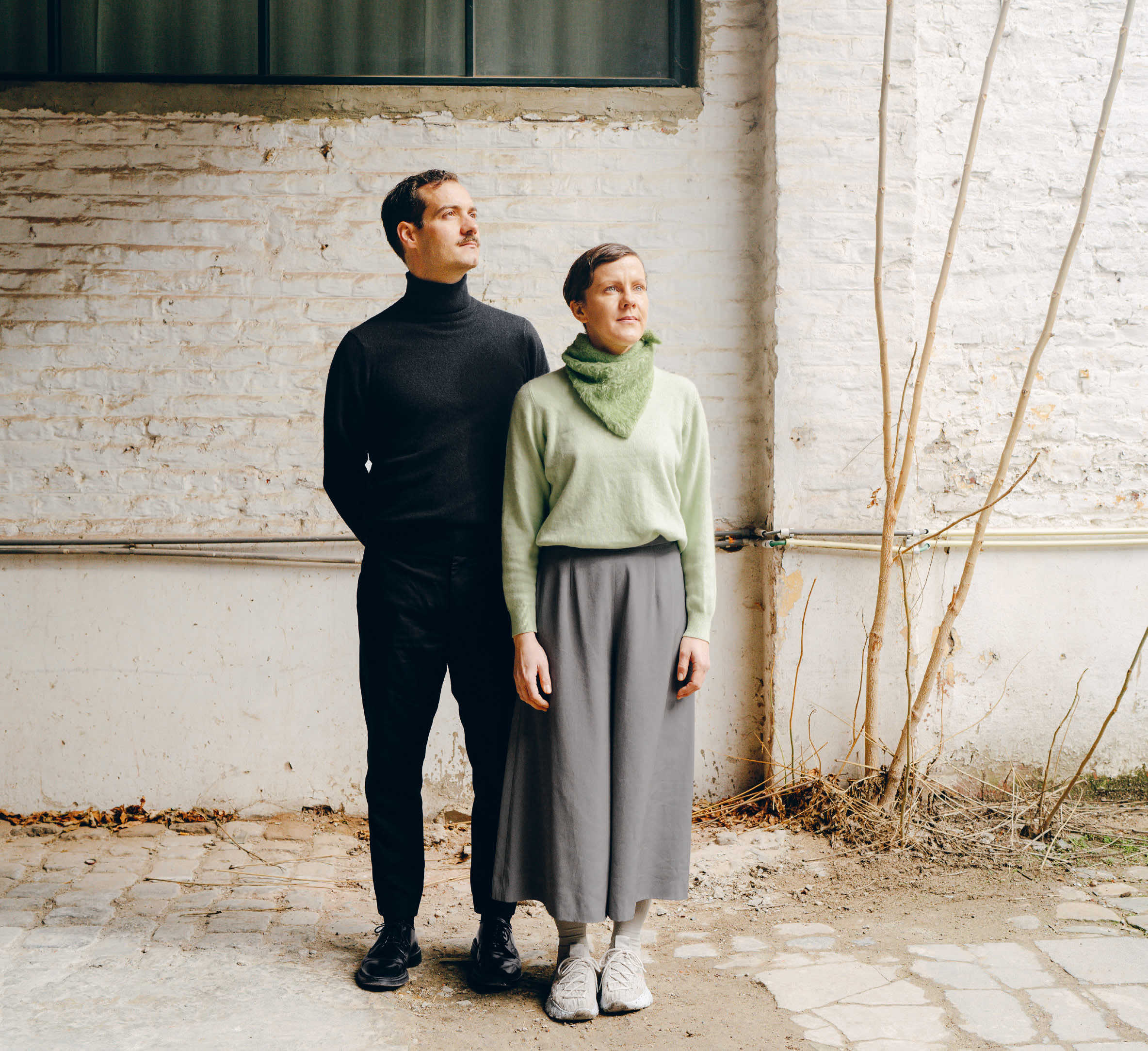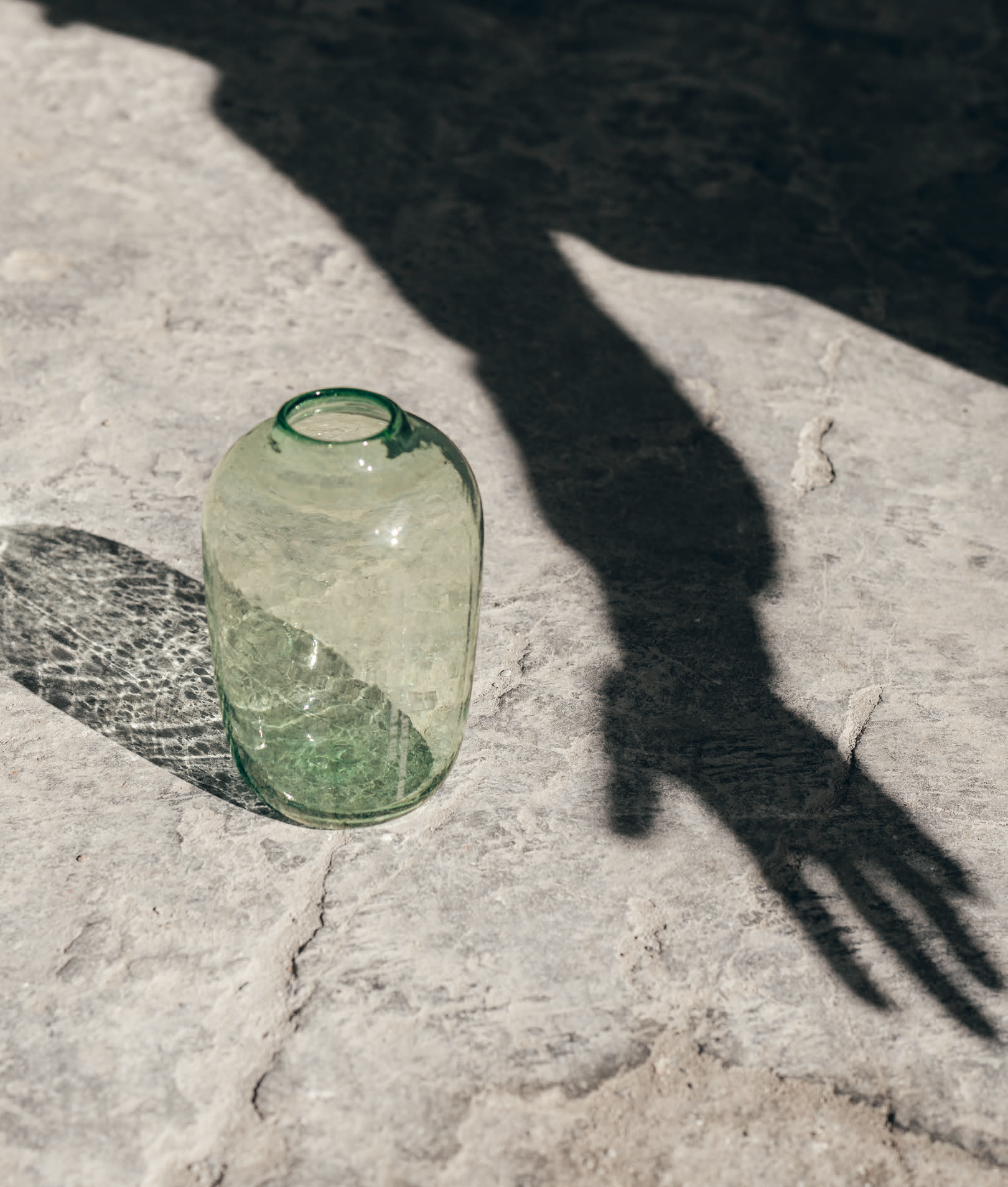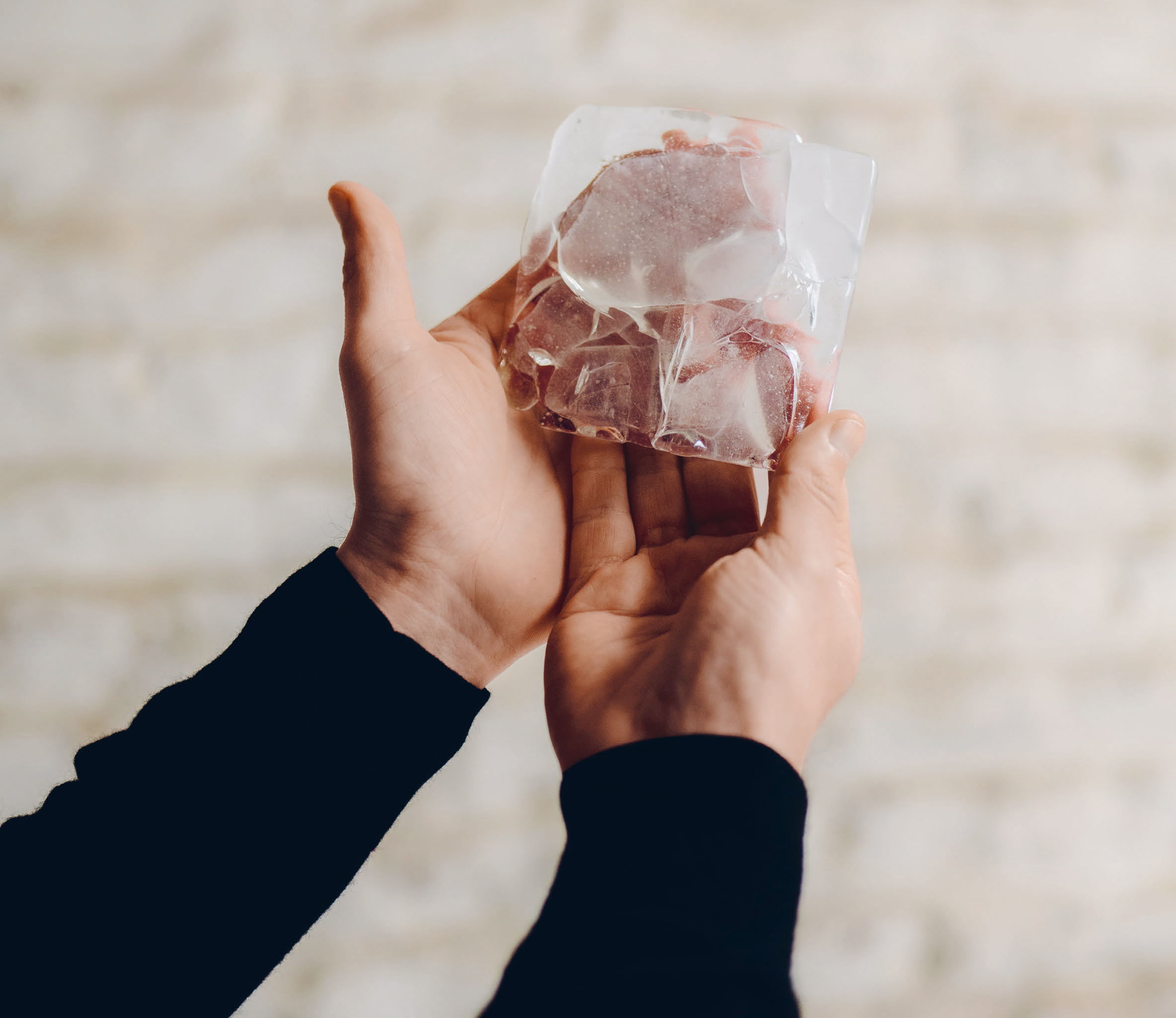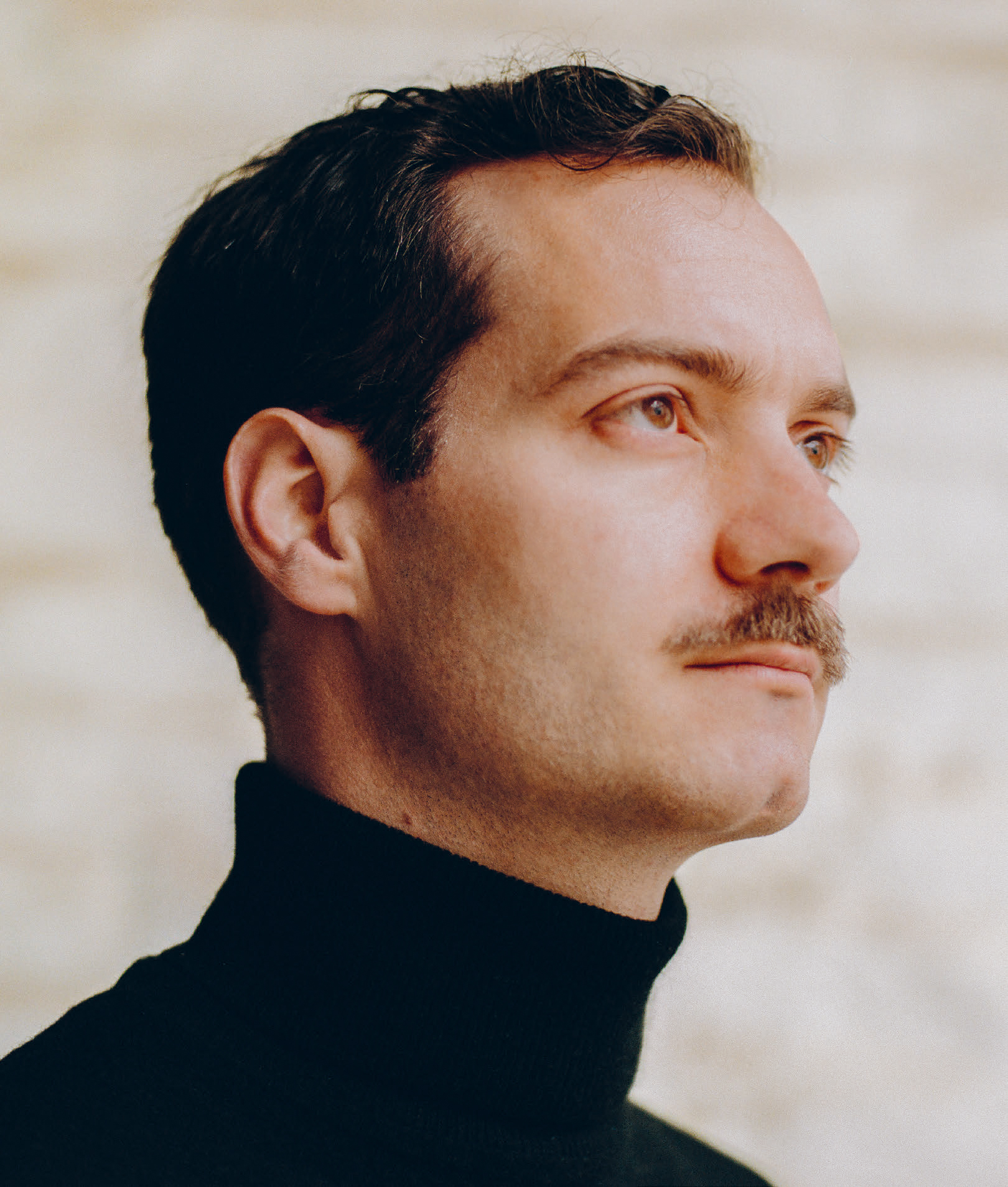
nomad sat down with the engaging Brussels-based design studio that is currently questioning the role of the designer, showing how an empathetic research process successfully finds a balance between resources and dysfunctional consumption behaviours.
In a new-found studio space north of the city, the two founders, Theresa Bastek and Archibald Godts, unstintingly delve into the power of education, exploring why designers should pair up with economists, how to avoid using the word sustainability, why energy should be a topic at school, and how to break down big, abstract questions into digestible and actionable tasks.
In 2022, Studio Plastique declared, We are surrounded by a man-made anthropogenic warehouse amounting to more than 50 million tonnes of materials, providing substantial resources for future generations. The thrill of applying such a way of thinking to this gloomy trajectory, along with the satisfaction of knowing that there might be a solution to all this after all, brings a much-longed-for sense of hope. The idea that there is a way—a process that will bring us forward by using waste—is what unites all of Studio Plastique’s projects.

Last year the studio won both the Wallpaper Design Award for Best Domestic Design and the Dezeen Award for Sustainable Design, two titles that in combination make it one of the most relevant and interesting design studios today. Its practice has devoted itself to turning landfill into lucrative resources through research and creative collaboration. Fostering a new, critical design role is also a focal point, giving young ambitious designers the confidence to dare to go deeper, hold on to hypotheses for longer and not give up—with Bastek and Godts’ portfolio of long-standing projects leading the way.
For nomad, we learned about Studio Plastique’s passion for blending imaginative scenarios and critical reflections with hands-on prototyping and product concepts. A wholesome rhythm of theory and practice unfolds almost in the relay, and it is fascinating to see how different methods seem to inform each other. For instance, Transitive Matter, a week-long workshop held last summer at Design Campus Dresden, and The School of Untold, curated by Formafantasma, Bastek and Godts, gave the students the means to dissect a material or object through contextual analysis as a way of re-thinking their role as designers. And at the same time, the studio launched its long-spanning project Common Sands–Forite Tiles, a collection made of repurposed glass from discarded microwave ovens designed in collaboration with Snøhetta and Fornace Brioni. Integrating education and a hands-on architecture product, the studio is proving a point and creating both cognitive and tangible value for future generations.
The ability to generously share critical design with ease might be another way of describing how Studio Plastique’s work sets them apart. There is a lot at stake, and big questions are being tossed around: how do we reinvent ourselves as humankind? The two founding designers paint a picture of a frustrating economy where numbers are not adding up, yet somehow there is a shared optimistic tone that takes over, a willingness to carry on, breaking down everything into small steps and overcoming them. It can be frustrating to realise that where we need to go cannot be reached straight away. Therefore, we embrace smaller steps in the form of products or processes that unfold gradual change, Godts tells us.


“On the one hand, the waste we are creating as humankind is polluting and harming us—but equally, it provides us with an opportunity: the millions of tonnes we generate mean we could stop reproducing new materials and only use what we have.”
We wanted to set up the discussion around the big challenge. When you talk about 50 million tonnes of material, what do we have to do to harvest this massive warehouse of resources? Where do we start?
A
G
In understanding these 50 million tonnes, we must first ask ourselves: how did we get here? And secondly, we must figure out how can we deal with these materials and make sure to transform them into constructive elements, so they become more in tune with our environment again.
T
B
Our research can be done for a client, or it can be our own investigation, but all our work is about understanding these waste materials deeply and getting that knowledge into the right dialogues with people. That is our toolset to get humankind involved.
A
G
The problem as we see it is that these waste materials became so abstract that most people cannot relate to them anymore. Silicones and plastics, for instance, are processed through so many steps today that we forget the natural oil they come from. That is where our harvesting begins, in highlighting the educational aspect and bringing back empathy for the materials. In every project, we are trying to communicate in depth what it is that we are throwing away.
-
-
-
-
The disconnect leading to the lack of empathy is real. Are there other challenges you see in your pursuit of this goal?
T
B
We see a million challenges, and a million opportunities at the same time. On the one hand, the waste we are creating as humankind is polluting and harming us, but equally, it provides us with an opportunity: the millions of tonnes we generate means we could stop reproducing new materials and only use what we already have. On the other hand, there are many industries that are abusing the story to create something that reuses waste but might only be adding one more cycle, and eventually it becomes something that we cannot use at all.
A
G
Another challenge turned opportunity is economics. Not only do we need to adapt and modify our relationship to products and materials, but we should also understand how we relate to the economy. If we understand that equation, we will manage massive behavioural change. So how do we do that? We are not economists, but as designers, we can easily imagine economic scenarios that can be translated and implemented by experienced experts. We are constantly striving to collaborate with theorists and practicians that complement the discipline of design.
-
-
-
-
In the beautiful combination of theory and practice that is Studio Plastique, how do you see your role, and what tools and methodologies do you apply?
T
B
Our design process always starts with looking at all the contexts involved. It sounds simple, but it is long and painstaking to go through. We look at political, societal, behavioural and environmental factors. We read, listen, and interview people to build our understanding, and then craft a model around what we find. For instance, with Common Sands, we had done our research but needed an economic model that could be applied to a domestic product.
A
G
This is where most projects struggle, our own included: where the research part has unveiled certain understandings and it has become crystal-clear what aspects need to change and what kind of collaborations you need to set up, but it is still not straightforward because it’s not economically feasible. To solve this, we conduct large scopes of research divided into shorter chapters, which you can feed into an economically viable context where gradual adjustments can amount to massive-scale behavioural change.
T
B
Common Sands is a good example of that; it is extremely large in scope but has been divided into smaller chapters of collaborations. By taking this approach, we can infiltrate and convince through an aesthetic and functional product. That is what we believe our role is—a research body that enters a conversation and strives to generate large-scale change by implementing a series of aspects.
-
-
-
-
It seems to be about being patient and persistent, spanning a vast timeframe. How do you find the motivation to pursue this goal and stay mindful and consistent in every project?
A
G
We are strategic in the sense that when we start one of our large investigations—either commissioned or self-initiated—we do know the aim behind it. The collaborations themselves are often unexpected, provoked by experiments and exhibitions that have sparked interest in others. But overall, keeping the goal of the project in the foreground has so far not been difficult. Common Sands is all about the dysfunction of our consumption behaviour, and that theme can continuously yield new collaborations beyond tiles or vases. Perhaps by engaging a brand that produces electronic devices and working with them on changes that are much more systemic.
T
B
Staying mindful is all about coming back to the first research questions; this focus that we have discovered or are being confronted with remains our magnetism.
-
-
-
-
We are curious to hear whether there have been any turning points that you particularly embraced since you set up the studio in 2017?
T
B
Yes, a couple. In general, it feels more gradual, but to return to Common Sands, the first recycling stations we interviewed were telling us, What do you want with this waste glass? It’s worthless. Hearing that was very confronting because we knew it was such a wonderful resource. Then, along the road, we met scientists who were curious about our work and encouraged us to look further. There are small turning points like those, which are unpredictable, beautiful and scary—yet at the same time, we are guided by them, and they have organically led us in a good direction, preventing us from becoming stubbornly linear.
A
G
When we started investigating, there was no handbook of how we could conduct research in such a way as designers, especially from a financial point of view. It is not obvious, but I feel that we are at a turning point in the field of design, where a new generation of designers is approaching us and looking at how we have set up our processes. They want to engage with criticality, and maybe that is less of a turning point for us, and more a pivot for design or for society itself.
Please select an offer and read the Complete Article Issue No 14 Subscriptions
Already Customer? Please login.
